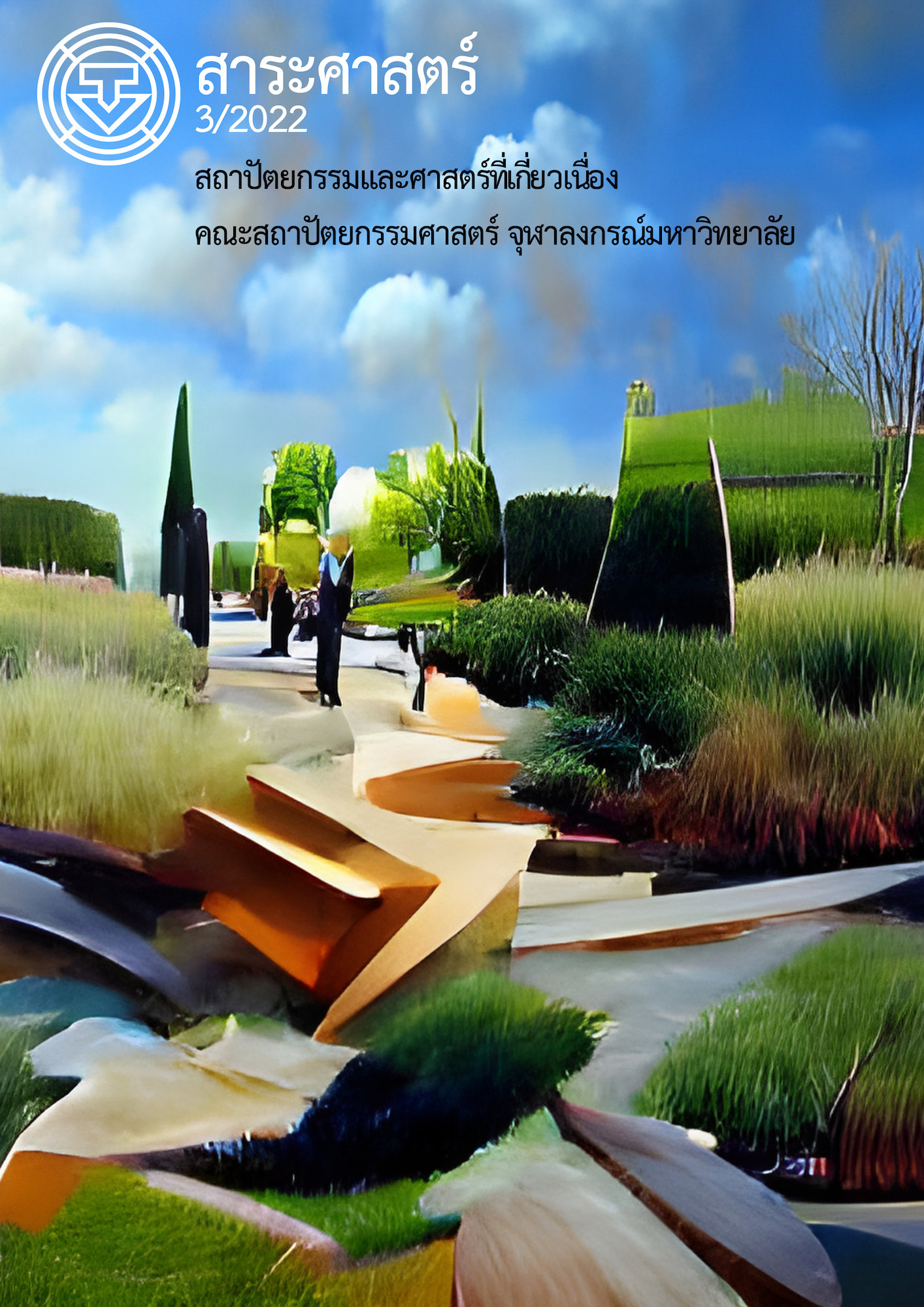A Study of Tourist Attraction Identities to Promote Cultural Tourism: A Case Study of Oopoi Market, Ratchaburi Province
Main Article Content
Abstract
Oh Poi Market at Ratchaburi Province. It is a riverside morning market and it was created through the collaboration of business owners, communities, temples, schools, and local governments. However, the word Oh Poi means rest in the Karen language.The objectives of this study are 1. to identify the tourist attractions of Ratchaburi Province's Oh Poi Market and 2.examine the guidelines for the promotion and growth of cultural tourism based on the nature of the tourist attraction. The sample group also consists of 6 local experts with extensive knowledge, understanding, and relationships with Oh Poi Market, as well as a group of Thai tourists who visit Oh Poi Market. A total of 279 individuals. Importantly, the instruments utilized were questionnaires and interview forms, and the data were analyzed using percentage, mean, standard deviation, and content analysis.
Following are the findings of the research: 1.The interviews with local experts revealed that the identity of Oh Poi market attractions consisted of 4 elements: 1) local products, 2) culture and traditions, 3) tourism related activities, and 4) travel place. 2. The majority of respondents have opinions regarding the Market Oh Poi community's potential identity. Overall, all aspects were at a moderate level, with local product identity opinions ranking highest. 3. The majority of respondents had opinions regarding the community of Market Oh Poi's tourist attraction factor. Ultimately, all aspects were at a moderate level, with the first opinion pertaining to the identity of a tourist attraction.The majority of respondents were pleased with Market Oo Poi's tourism industry. All aspects were at a moderate level overall. However, the respondents are most pleased with Oh Poi market's exceptional quality. (in contrast to other markets) The research provides information that the researcher has submitted the community cultural landscape model as a guideline for O-Poi market management under cultural identity to raise awareness and promote tourism in Ratchaburi province based on the aforementioned information. Continuously stimulate the economy and generate income for the villagers.
Article Details
References
กระทรวงการท่องเที่ยวและกีฬา. (2563). คู่มือการบริหารจัดการแหล่งท่องเที่ยวเชิงสร้างสรรค์. กรุงเทพฯ: กรมการท่องเที่ยว.
กิตติศักดิ์ กลิ่นหมื่นไวย. (2561). แนวทางการส่งเสริมการท่องเที่ยวเชิงวัฒนธรรมชุมชนท่ามะโอ อำเภอเมือง จังหวัดลำปาง. วารสารศิลปศาสตร์ มหาวิทยาลัยแม่โจ้, 6(1), 131-148.
จุฑามาศ จันทรัตน์. (2544). การท่องเที่ยวกว้างไกล หัวใจอยู่ที่ความร่วมมือ. กรุงเทพฯ: การท่องเที่ยวแห่งประเทศไทย.
ชนัญ วงษ์วิภาค. (2559). การท่องเที่ยวเชิงสร้างสรรค์ (หลักสูตรการจัดการมรดกวัฒนธรรมและอุตสาหกรรมสร้างสรรค์). กรุงเทพฯ: วิทยาลัยนวัตกรร มหาวิทยาลัยธรรมศาสตร์.
ญาดา ชอบทำดี และ พิทักษ์ ศิริวงศ์. (2558). รูปแบบการท่องเที่ยวเชิงสร้างสรรค์ตลาดน้ำท่าคาสำหรับนักท่องเที่ยวสูงอายุ. กรุงเทพฯ: มหาวิทยาลัยศิลปากร.
ดุษณี ชาวนา. (2551). รูปแบบการจัดการท่องเที่ยวโดยชุมชนอย่างยั่งยืน ชุมชนบ้านผาแตก ตำบลสบปิง อำเภอแม่แตง จังหวัดเชียงใหม่. กรุงเทพฯ: สำนักงานกองทุนสนับสนุนการวิจัย.
ตลาดโอ๊ะป่อย. (2563). ข้อมูลทั่วไปของตลาดโอ๊ะป่อย. สืบค้นเมื่อ 14 พฤษภาคม 2563, จาก https://www.prachachat.net/local-economy/news-289539
ทินกฤต รุ่งเมือง. (2558). การพัฒนารูปแบบการท่องเที่ยวเชิงสร้างสรรค์เพื่อส่งเสริม เครือข่ายกิจกรรมการท่องเที่ยว ของกลุ่มทวารวดี 4 จังหวัด. วารสารร่มพฤกษ์ มหาวิทยาลัยเกริก, 33(1), 138-160.
นวลน้อย ธนะชัยศรี. (2552). ศักยภาพชุมชนตลาดน้ำดำเนินสะดวกเพื่อการอนุรักษ์และฟื้นฟูแหล่งท่องเที่ยวทางวัฒนธรรม. (วิทยานิพนธ์ปริญญามหาบัณฑิต, มหาวิทยาลัยศิลปากร).
นาฬิกอติภัค แสงสนิท. (2556). การท่องเที่ยวเชิงสร้างสรรค์: การรับรู้ของนักท่องเที่ยว ความพร้อมของเจ้าของกิจกรรมและความเป็นไปได้ของการท่องเที่ยวเชิงสร้างสรรค์ในประเทศไทย. สืบค้นเมื่อ 3 มิถุนายน 2560, จาก http://www.dasta.or.th
ประชาชาติธุรกิจออนไลน์. (2562). “โอ๊ะป่อย” ต้นแบบตลาดชุมชนสวนผึ้ง ชูอัตลักษณ์-วัฒนธรรม โกยเงินล้าน. สืบค้นเมื่อ 3 มิถุนายน 2560, จาก https://www.prachachat.net/local-economy/news-289539
พระอธิการโสภณ ปิยธมฺโม (กิ่งแก้ว), ละเอียด จงกลนี และ พระฮอนด้า วาทสทฺโท (เข็มมา). (2564). พลังบวร : พลังหลักของชุมชนคุณธรรม. วารสารปัญญาปณิธาน, 6(1), 69-80.
รพีพรรณ จันทับ และ ลินจง โพชาร. (2559). ปัจจัยด้านอัตลักษณ์ทรัพยากรท่องเที่ยวที่มีผลต่อความสำเร็จในการจัดการการท่องเที่ยวหมู่บ้านช้างบ้านตากลางจังหวัดสุรินทร์. WMS Journal of Management, 5(1), 48-59.
รัฐนันท์ พงศ์วิริทธิ์ธร และ ภาคภูมิ ภัควิภาส. (2559). แนวทางการพัฒนาการท่องเที่ยวเชิงเกษตรเศรษฐกิจสร้างสรรค์ของชุมชนบนพื้นที่สูง อำเภอแม่ริม จังหวัดเชียงใหม่: สวนกุหลาบ. วารสารปัญญาภิวัฒน์, 8(1), 79-90.
Barisic, P. & Blazevic, Z. (2014). Visual identity components of tourist destination. International Journal of Social, Management, Economics and Business Engineering, 8(7), 2179-2183.
Cochran, W. G. (1977). Sampling techniques (3rd ed). New York: John Wiley & Sons.
Richards, G. (2010). Creative tourism and local development. Creative tourism: A global conversation: How to provide unique creative experiences for travellers worldwide. Santa Fe: [n.p.].
Suttipisan, S. (2013). Adaptive uses of local textiles for creative tourism product development in Thailand. International Journal of Cultural and Tourism Research, 6(1), 47-55.


